NAMM 2020 Saxophone Gear Roundup
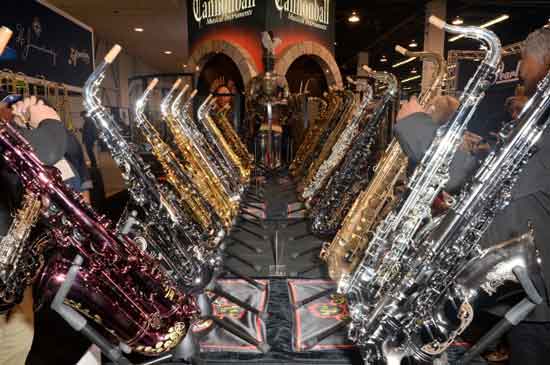
Introduction
Once again, the NAMM (National Association of Music Merchants) Show 2020 was filled with exhibitors showcasing their latest music-making products, so once again,I was lucky enough to be able to visit the show myself and check out all of the latest and greatest saxophones, necks, ligatures, mouthpieces, reeds, neck-straps, neck-screws, cases and the list goes on and on and on.
With only four days to see it all, it’s virtually impossible to try out every single product that I’m interested in checking out, but in this article I share my finding with the new products I did have a chance to test play at the show this year. I’ve also included a list of products I didn’t get to try out, but piqued my interest as worthy of checking out this year.
Saxophones
Eastman 850 Tenor
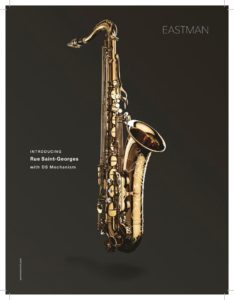
Since test playing the new Eastman 850 alto saxophone at last year’s NAMM show, Eastman this year released the 850 tenor. Similar to the Eastman 850 alto I play tested last year, the Eastman 850 tenor embodies the same unique features such as: re-designed side keys, the alternate f# and high f# key placement, each palm key placed at a different angle for maximum comfort, left hand pinky table has a raised C# for a smoother transition to the low B and Bb, uniquely designed octave mechanism, and rounded tone whole cups.
In addition, Ralph Torres over at Eastman informed me that the 850 model will come with 2 necks giving the player further possibilities to experiment with sonically as well as how the horn responds (more or less resistance based on the different neck tapers).
Similar to the alto, I overall really liked how the Eastman 850 tenor responded as well as felt under my fingers. The Eastman 850 tenor responded well from top to bottom with overall good intonation without much adjustment.
Sonically, the Eastman 850 tenor had a more bright and focused sound in comparison to the Eastman 52nd street tenor; which I found to lean towards the darker side of the sound spectrum and play more spread than focused.
In addition to the Eastman 850 tenor being released, Eastman also released the updated keywork for the Eastman 52nd street line of saxophones. Personally, I see this as a major improvement to the overall keywork found on the current Eastman 52nd street saxophones. The new keywork on the Eastman 52nd street tenor and alto saxophone felt much more comfortable under my fingers. I am excited to see Eastman release the 852 alto and tenor which will be the 52nd street saxophone but with the new keywork you will find on the Eastman 850 model. I would like to thank Ralph Torres for taking the time to show me the new Eastman 850 tenor as well as updated keywork you will now find on the Eastman 52nd street line of saxophones.
Video: Sax.co.uk: Eastman Saxophones
Schagerl Model 66 Tenor Saxophone “Vintage”
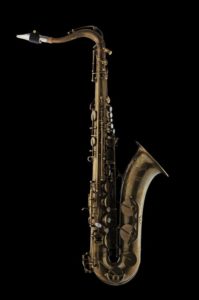
I first noticed Schagerl at last year’s NAMM showcasing their line of trumpets which seemed to be quite a hit. While checking out the Schagerl booth this year, I noticed they brought a few saxophones. The Schagerl saxophone I played was the Model 66 with the “vintage” finish.
I had a chance to speak with Karl Schagerl who is the CEO of Schagerl about the Model 66 line of saxophones. Karl informed me that the Model 66 pays tribute to the Mark VI (like many saxophones being manufactured today) with the parts coming from Taiwan and then the horn being setup in the Schagerl factory in Austria. Sonically, I found the Model 66 leaned towards the darker side (depends on your setup) and felt fairly comfortable under my fingers.
Personally, I would make some adjustments to the lower stack such as the spring tension for a more even feel. From an intonation stand point the saxophone played even from low Bb to high F# without much adjustment, but I did find the altissimo to play a bit on the resistant side. After further play testing, the Schagerl Model 66 did remind me of other Taiwanese saxophones that were going after that vintage look, feel, and sound, but the Schagerl Model 66 in comparison had a overall better setup (I still think there is room for improvements) and sonically had a nice warmth and edge to the sound.
I found out that Schagerl Model 66 is carried by Chuck Levin’s Washington Music Center and the current retail price is around $3,200 for the tenor which is quite competitive with other brands. I would like to thank Karl for taking the time to further discuss the Schagerl Model 66 tenor and would like to further test play this model in the future.
P Mauriat Master 97 Soprano

With the popularity of the P Mauriat Master 97 alto and tenor saxophone, P Mauriat has just released the P Mauriat Master 97 for soprano. Please note, I mainly play alto and tenor so I will do my best to provide you my overall impression of the soprano.
The P Mauriat Master 97 soprano is a 2-piece soprano (potentially a one piece option in the future) that aesthetically reminds me of the Yanagisawa 901 or 991 based off of the finish as well as the key-work (very similar to a Yanagisawa 901 or 991). The overall setup felt good under my fingers but I would make a few adjustments in the palm keys for easier access.
Sonically, the Master 97 soprano reminded me of the alto and tenor which embodied a focused and warm sound over a more edgy and spread sound which I have found on other P Mauriat models. My recommendation if you are in the market for a soprano saxophone would be to test play the P Mauriat Master 97 soprano (especially if you like the Master 97 alto & tenor) and see how it compares to a Yanagisawa WO1 or WO10 as well as Yamaha 82z soprano.
Personally, I prefer the Yanagisawa & Yamaha sopranos but I think the P Mauriat Master 97 soprano is a nice addition to the current line of P Mauriat sopranos (76 2nd edition & Le Bravo 200).
Antigua AS5200 & TS5200 Alto & Tenor Saxophone
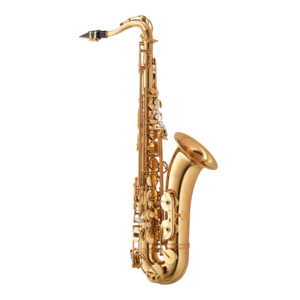
I have played the Antigua line of saxophones in the past from the Power Bell model, to the ProOne, to the Model 25 for both tenor and alto saxophone and personally felt that the overall sound, keywork, and setup were ok but not great (always room for improvement).
At NAMM 2020, I ran into Mike Summers who is the brand manager at Antigua. I shared with Mike my overall thoughts and feedback on Antigua as well as the current lineup, and he appreciated the feedback and said he is constantly working to further improve the current lineup. While re-visiting some of the Antigua saxophone models, Mike asked if I would try Antigua’s new model which was released at TMEA 2019 called the Antigua 5200. Mike informed me that the Antigua 5200 was Antigua’s new offering designed with the classical player in mind who currently might be playing on a modern Selmer, Yamaha, or Yanagisawa but interested in what other options are out there.
The 5200 has the following features: a redesigned neck, fully ribbed construction, one-piece bell, pisoni pro pads with metal resonators, standard sized bell, and redesigned ergonomics. After play testing both the 5200 tenor and alto saxophone, I was pleasantly surprised. Similar to what I saw with the P Mauriat 97 master alto when it was first released, I personally believe the 5200 series by Antigua is a move in the right direction. Both the 5200 alto and tenor were free blowing and sonically fell in the neutral sound spectrum, but depending on your setup could play darker or brighter.
The keywork felt generally comfortable under my fingers, but after further play testing, I provided Mike a few suggestions for further improvements or enhancements to make it even better such as: the position of the Eb key, the high F# tear drop key being slightly lowered for a smoother transition, and taking the rollers from the ProOne model low C#, B, and Bb (similar to Yanagisawa) and also using those on the 5200 series. Again, I would like to thank Mike for taking the time to discuss with me more about the Antigua 5200 alto and tenor saxophone and am curious to see how this model evolves.
Product Details: More info from Antigua.
Neckstrap & Accessories
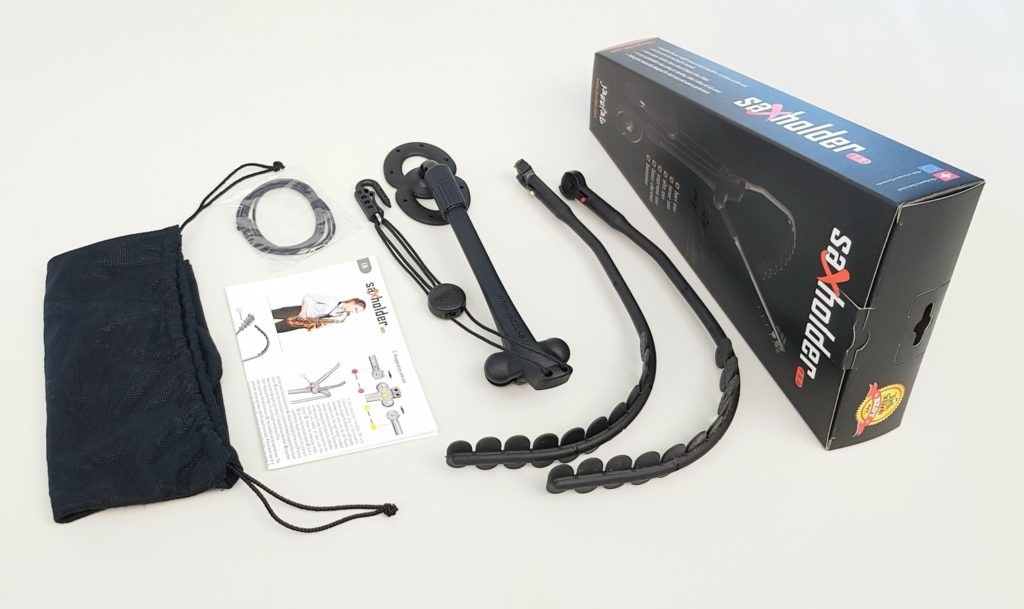
Jazzlab Saxholder PRO
The Jazzlab Saxholder is personally one of my favorite neckstraps on the market today and the one I currently use. At this year’s NAMM, Jazzlab introduced the JazzLab Saxholder Pro neckstrap which is similar to the previous model but with the following enhancements:
- The shoulder handles can now be removed and re-attached when needed for easier transport.
- Where the neck strap cord begins has been raised to provide a better position when adjusting your saxophone.
- Instead of pulling down the adjuster back and forth to find a comfortable position for the stomach plate, you now have a telescopic slider which you can unlock and lock by turning instead of adjusting up and down.
- The stomach slider is larger and stays vertical instead of being able change between a vertical and horizontal position.
- When adjusting the neckstrap cord you now have a slider button which you simply push in to adjust and then release to lock in place (better design over the previous mechanism).
The new Jazzlab Saxholder Pro has some nice enhancements over the previous model and I highly recommend those who have an existing Saxholder neckstrap, to consider picking one up if you prefer the new enhancements. With that being said, the current JazzLab Saxholder neckstrap is still a great neckstrap and I would only make the switch if you prefer the new model.
More details: Jazzlab Saxholder PRO
Amazon: Buy Now
Jazzlab Deflector PRO
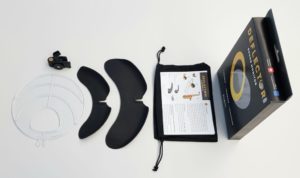
In addition to using the Saxholder, I have for quite some time been using the Jazzlab Deflector. For those of you don’t know, the Jazzlab Deflector will help you better hear yourself whether you are practicing, recording, or at a gig. I have found the Deflector especially useful depending on where I am playing or if I am having trouble hearing myself in various settings. The Jazzlab Deflector Pro is very similar to the original Deflector model except the Pro model now comes with two additional sound mirror attachments which allows the Deflector to be used for trumpet, trombone, and now a straight soprano (most important!). For those of you who do not own a Deflector, I highly recommend picking one up.
In addition, if you currently own a Deflector and are interested in the Pro model, my recommendation would be to pick one up if you are going to use the additional attachments, if not, I would stick with the original model.
More Details: Jazzlab Deflector
Amazon: Buy Now
Reeds
Silverstein Alta Ambiploy Reeds

Since first playing Silverstein’s ligatures a few years back, Silverstein has expanded their product line quite a bit and is now offering mouthpieces, cane reed, and other unique saxophone devices such as the Omniguard, Reedcure, Omnicap, and Omnipatch.
They’ve recently released a new synthetic reed for saxophone called the Alta Ambiploy. Although I still prefer cane reeds over many of the synthetic reeds offered on the market today, I was curious to see how Silverstein’s new Alta Ambiploy reed responded.
The Silverstein Alta Ambiploy Reed Details
- Made out of Ambipolymer.
- Wet this reed like cane.
- Consistent in all temperatures and climates.
- Made with double injection molding process for consistency from reed to reed.
- Can be further customized with a reed tool (ReedGeek or Reed Knife).
- 5-15 minutes the reed will pair/align to your current mouthpiece setup.
I was pleasantly surprised how the Alta Ambiploy reed responded. The sound was consistent across all registers. For me personally, the Alta tenor reed responded close to cane after playing for quite some time but I still feel there are some different timbres I can obtain on a cane reed that I have simply not noticed while playing a synthetic reed. What I was most impressed with the Alta reed is the overall feel. After soaking the reed and playing for a bit, the Alta reed was more comfortable to play on over other synthetics that might play fairly well but the feel is quite different from cane. I will say the 2.5 strength Alta reed felt a tad bit hard so I believe I will either move down a half step or simply use my reedgeek to make the Alta reed a tad bit softer. I would like to thank Silverstein for letting me try the Alta reed. I am not sure if I am ready to make the switch from cane to synthetic but I think Silverstein is moving in the right direction.
Product Details: Silverstein Alta Ambipoly Reed
D’Addario Venn Reed
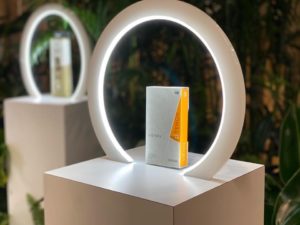
This year, In addition to D’Addario releasing a new neckstrap, D’Addario’s big news was the release of their new synthetic reed called the Venn reed. Unfortunately since this reed just came out right before the show, I did not have the opportunity to test play but wanted to share some details for those of you who are interested (I know I am) in checking out how the VENN reed compares to other synthetic reeds as well as traditional cane reeds.
The D’Addario Venn reed is the first advanced synthetic reed offered by D’Addario that attempts to combine the longevity and durability of a synthetic reed without compromising on the sound and play-ability of a cane reed (which is, of course, the shared goal of all synthetic reeds) .
The Venn is a combination of different synthetic fibers with resin and also some cane particles. It will be coming out in April of this year for tenor, alto, and Bb clarinet, and offered with 5 different strengths.
Ligatures
JLV ligature
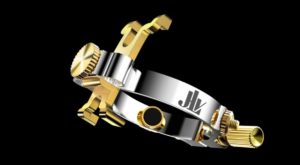
There are so many ligatures on the market today that it has gotten harder and harder for me to keep track of all of them. At this year’s NAMM, I was able to test play the JLV ligature, which I had heard about in the past but had not had a chance to test play myself. The JLV ligature was invented by Jean-Luc Vignaud who is a well-known French saxophonist and teacher at CNSM of Paris.
The JLV ligature
- 100% made in France
- Designed to offer a centered and even sound across all registers as well as a resurfacing feature to prevent air leakage between the reed and the mouthpiece.
- Comes in 5+ finishes: Polished, Brushed, Silver Plated, 24k Gold Plated, Platinum Plated, and Black Edition (New!)
Demonstration Videos
Thoughts
I had a chance to meet Jean-Luc Vignaud as well as his team who showed me the different finishes as well as how to put the JLV ligature on my mouthpiece. The finishes I tried were the Silver-Plated, Gold-Plated, and Platinum Plated finish to compare to my Ishimori Sterling Silver ligature.
The overall build quality on the JLV ligature was very sturdy even though from first looks its appeared quite delicate. Putting on and taking off the JLV ligature does take a little bit of time to get used to as well as making some simple adjustments once you secure the ligature on your mouthpiece.
Once you get the hang of putting on and taking off the JLV ligature, it is quite easy to use. What’s unique about the JLV ligature besides the very few contact points between the mouthpiece and the reed is the four point bottom bar. 2 of the bottom bar’s feet sit on the reed stock while the other 2 feet sit on the vamp below the heart. Having two feet sitting on the vamp is what Jean-Luc Vignaud and his team told me will help prevent air leaks between the reed and mouthpiece.
The JLV ligature worked quite well with my mouthpiece setup. I found the reed vibrated evenly across all registers and the response was great. Between all three finishes, I mainly noticed a difference in the responsiveness as well as resistance/back-pressure with the Platinum Plated finish, which ended up being my favorite.
Overall, I was happy I had a chance to test play the JLV ligature and meet the JLV team. My recommendation is if you are in the market for a ligature, definitely check these out. That said, I would spend some time getting comfortable with taking the ligature on and off your mouthpiece as well as making minor adjustments to see if this is easy for you or not.
In addition, The JLV ligature is on the high end from a price standpoint (similar to Ishimori, Silverstein, etc.) so if you are on a budget for a ligature, I would recommend considering other ligatures before test playing the JLV ligature.
More info: JLV Ligatures
Mouthpieces
Theo Wanne
Theo Wanne this year released 4 updated/revisions to his current line of pro mouthpieces. These mouthpieces include: the Ambika 3, The Durga 4, The Gaia 3, and the Shiva 3. I had a chance to test play all but the Ambika 3. I will be sharing my thoughts test playing these new models as well as some of the updates Theo has made.
Ambika 3
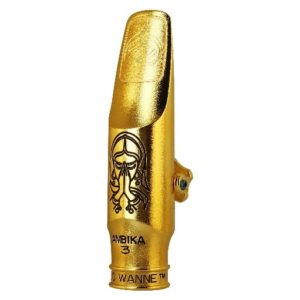
Overview
- Shark Gill Baffle.
- Newly designed baffle and chamber.
- Sonically: Even freer blowing than the previous model with more dynamics.
- Timbre: Darkest mouthpiece.
- Material: Comes in Metal as well as Hard Rubber.
- Target: Aimed at those players who enjoy playing on those vintage mouthpieces from the 1940’s -50’s but want a fuller sound with more projection and wider dynamics.
- Product Details: Theo Wanne Ambika 3
Durga 4 (7*)
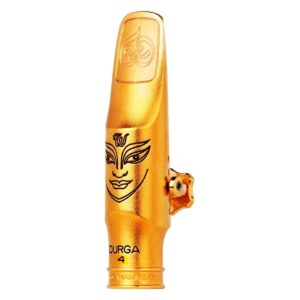
Overview
- Design: proprietary inverted-power-ring, large chamber, rounded inner side walls, and a uniquely shaped long step baffle.
- Newly designed baffle and chamber.
- Sonically: Recommended for Jazz, R&B, Rock & Roll, and the contemporary player
- Timbre: Bright sound.
- Material: Comes in Metal as well as Hard Rubber
- Target: Aimed at those players who want a well-rounded mouthpiece but has been quite popular with the contemporary player.
- Product Details: Theo Wanne Durga 4
Overall Impression
The Durga 4 is probably one of the most free blowing and responsive mouthpieces I have ever played. The Durga 4, when pushed can really project and sonically leans towards the brighter side of the sound spectrum. It’s quite flexible and has a wide dynamic range.
Personally, I think more contemporary players will enjoy the Durga 4 while other players coming from vintage links or who are use to a different level of resistance will prefer one of Theo’s Wanne’s other models. I think those players who want an incredibly free-blowing mouthpiece that responds instantly and leans towards the bright side will enjoy the Durga 4.
Gaia 3 (7*)
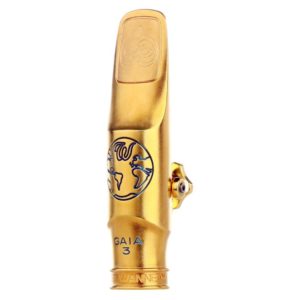
Overview
- Shark Gill Baffle
- Thin body, Rounded inner side walls, large chamber, and roll-over baffle
- Sonically: Theo’s goal was to recreate the sound of a great Vintage Florida Otto Link as well as the sonic characteristics you hear from the great tenor saxophonist Dexter Gordon
- Timbre: Darkest mouthpiece
- Material: Comes in Metal as well as Hard Rubber
- Product Details- Theo Wanne Gaia 3
Overall Impression
Coming from a hard rubber slant link, the Theo Wanne Slant Sig 2 is probably the closest mouthpiece Theo offers to what I am playing on today. With that being said, The Gaia 3 was incredibly free-blowing (like many of Theo Wanne’s mouthpieces) with a dark sound that was easy to articulate. I found the Gaia 3 had a great dynamic range which was, overall, easy to control with the sound leaning on the cleaner side instead of being very edgy.
Shiva 3 (7*)
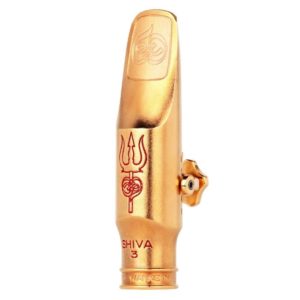
Overview
- Shark Gill Camber & Step Baffle.
- Ideal for Rock n’ Roll or R&B.
- Sonically: This is Theo’s brightest mouthpiece offering.
- Material: Comes in Metal.
- Product Details- Theo Wanne Shiva 3
Thoughts
Compared to the Durga 4, Gaia 3, and Theo Wanne’s other models, The Shiva 3 is as Theo describes, his brightest mouthpiece offering. Although quite bright sonically, I did not find the Shiva to have a thin or shrill sound when pushed (especially in the palm keys). The Shiva 3 was incredibly responsive (similar to the Durga 4, but the Durga 4 is a bit more responsive) from low Bb to high F# and whether I was playing soft or loud, the Shiva 3 was quite easy to control.
Although I prefer a darker-sounding mouthpiece (more like the Gaia 3 or Slant Sig 2), I understand why many players who play Theo’s mouthpieces like the Shiva model. If you are looking for a bright mouthpiece that projects as well as cuts, the Shiva 3 might be the right model for you.
I would like to thank Matt Ambrose (Chief Machinist and CAD Designer) at Theo Wanne for taking the time to let me try the new models Theo Wanne was showcasing at this years NAMM.
Website: Theo Wanne
JodyJazz- HR* Custom Dark
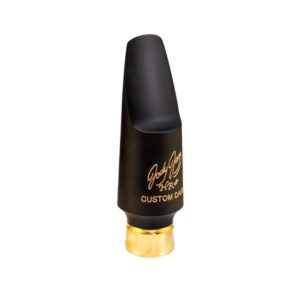 At this year’s NAMM show I had a chance to stop by the JodyJazz booth and test play the new JodyJazz HR* Custom Dark in a 7 tip opening. Due to the popularity of the JodyJazz HR* mouthpiece, Jody wanted to offer a mouthpiece that embodied a warm dark sound with more spread. The Custom Dark model utilizes the Chedeville hard rubber with rounded side walls and a much larger chamber which helps achieve a darker, warmer, and more spread sound in comparison to the JodyJazz HR* mouthpiece.
At this year’s NAMM show I had a chance to stop by the JodyJazz booth and test play the new JodyJazz HR* Custom Dark in a 7 tip opening. Due to the popularity of the JodyJazz HR* mouthpiece, Jody wanted to offer a mouthpiece that embodied a warm dark sound with more spread. The Custom Dark model utilizes the Chedeville hard rubber with rounded side walls and a much larger chamber which helps achieve a darker, warmer, and more spread sound in comparison to the JodyJazz HR* mouthpiece.
I found JodyJazz HR* Custom Dark mouthpiece to do exactly as Jody described. The HR* Custom dark was responsive with sound that was more spread as opposed to having a tightly-defined core. The dark and warm sound I could obtain on this mouthpiece made me think of Joe Henderson.
In terms of projection, the HR* Custom Dark did well, but if you are looking for mouthpiece with more projection and one that can cut, I would recommend one of JodyJazz’s other models. Overall, I am really impressed with the new JodyJazz HR* Custom Dark mouthpiece which is now my personal favorite model of Jody’s mouthpiece lineup.
Retro Revival- “Stubby” Replica 1945 Bob Dukoff Short Body Tenor
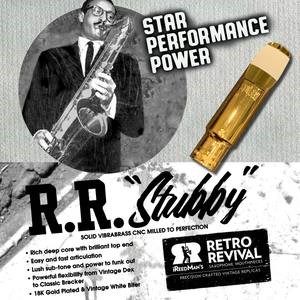
At The Retro Revival (R.R) booth this year, I had a chance to test play the new Retro Revival “Stubby”, which is a replica of a 1945 Bob Dukoff Short Body mouthpiece. I believe this mouthpiece was based off a vintage Dukoff “Stubby” that Bob Sheppard played on for years.
Those of you have played an original Dukoff “Stubby” in great condition know these mouthpieces play extremely well, but are quite hard to find. I have played a few Dukoff “Stubby’s” in past and always thought of them as the direct competitor to the vintage metal Otto Link.
The Dukoff “Stubby” has a large chamber with deep rounded inner-side walls (similar to a vintage link). What makes the “Stubby” different is it has a higher floor which I found allows for greater projection. The Retro Revival “Stubby” mouthpiece played great from top to bottom.
This mouthpiece was easy to subtone and embodied a warm dark tone that had a nice edge when pushed. I personally prefer playing on hard rubber mouthpieces, but the R.R “Stubby” was incredibly comfortable to play on, and is now my favorite metal model that R.R. offers.
If you have not tried the R.R “Stubby”, I highly recommend you do so and if you can, compare it to the R.R “Super D” and see how each one plays.
Product Details: “Stubby” Replica 1945 Bob Dukoff Short Body Tenor Details
Gottsu- Jazz Soloist
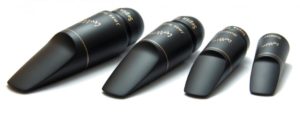
I remember visiting the Gottsu (founded by Masahiko Goto in 2005) at my very first NAMM show. That year, I had the opportunity to test play the Sepia Tone VI line of mouthpieces which I quite liked. After my first NAMM show, I had not seen Gottsu return to future NAMM’s until this year (Am glad he did).
At this year’s NAMM, Gottsu showcased an extensive line of mouthpieces which included the Sepia Tone VI, Jazz Soloist, Jazz Metal, Master (based off a vintage Master Link), Studio Metal, and Hibiki.
Since first meeting Goto, I found out that he purchased a CNC machine and has been working to further refine his line of mouthpieces – and it shows. After play testing each mouthpiece model for tenor (all played great), what stood out to me was the Gottsu Jazz Soloist.
The Jazz Soloist is not an exact copy, but more a modified version of an original vintage Selmer Soloist which was made popular by such players as Kenny Garrett, Joe Henderson, Rich Perry, and others. The tip opening I landed on was a “G” opening – which is equivalent to a 7 or .100. The piece has a horseshoe chamber like you see on the original Selmer Soloist.
I found the Gottsu Jazz Soloist had a nice dark sound with a clear core that could project and did not feel stuffy or have a nasally sound that you might find on an original Selmer Soloist. In addition, the Gottsu Jazz Soloist was very responsive and easy to play at various dynamic levels.
If you are in the market for an original Selmer Soloist, I would highly consider checking out the Gottsu Jazz Soloist because personally I think it plays better than the originals in sound, projection, dynamics, etc.
Product Details: Gottsu Jazz Soloist
Video: Tony Lakatos demonstrating Gottsu Mouthpieces
Honorable Mentions
- ReedGeek: ReedGeek Klangbogen “Black Diamond” finish
- Oleg: Maestro & Contempo Mouthpieces- Hard Rubber Version
- AM Mouthpieces: All Models Updated
- SYOS mouthpieces: Tivon or Daro mouthpiece for Tenor
- KeyLeaves Gap Cap: BSWE Key Leaves & GapCap Review
Special thanks & shout outs to SaxSpy, Sax.co.uk, Music & Arts, WWBW, & BriansThing.
Final Thoughts
2020 NAMM was an exciting show filled with exhibitors showcasing their new and existing line up of saxophones, ligatures, mouthpieces, reeds, necks, neck straps, sax stands, and a seemingly never-ending list of saxophone products. This year in particular, I saw a further focus on the classical saxophonist (mainly mouthpieces), which was similar what I saw in 2019, but what stood out was a clear emphasis on improvements to many existing product lines.
I also saw more and more vendors expanding their product lines to essentially become a one-stop-shop. Although I think this can be a solid approach to assembling a product line, generally speaking, I’d prefer seeing manufacturers really focusing on what they do well, and refine their current products as opposed to trying to expand into offerings that they may not excel at to the same degree.
Unfortunately, as is always the case, I was not able to visit every booth at the show that I wanted to and spend the amount of time I would have liked to test play various products.
To Exhibitors…
If I did not include you in this list, please know that it is not a reflection on your product, it just came down to time. If you would like me to review your product or have any questions, please feel free to contact me using the information from my author bio below.
Looking forward to NAMM 2021!


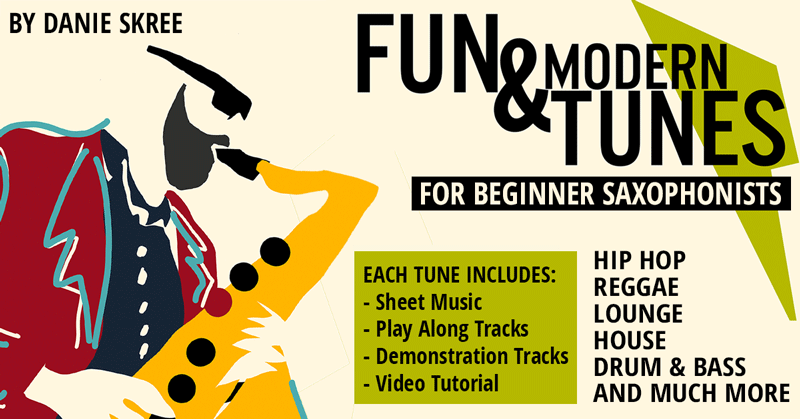



February 18, 2020 @ 8:30 pm
Thanks for the in depth reviews. Looking forward to checking out that new D’Addario synthetic.
February 20, 2020 @ 2:14 am
Hello RanerCharic,
Glad you enjoyed the review. me too!
February 24, 2020 @ 1:57 pm
How much to take alto sax henry selmer super action 80 series II… With microphone and all accessory?
February 24, 2020 @ 2:01 pm
Hello Nacer,
I do not believe I understand your question. Are you asking how much would it cost to purchase a Selmer Super Action 80 Series II alto saxophone with a microphone and additional accessories?
July 21, 2020 @ 4:06 am
Hello Sir/Ma,
My name is Williams Scott I am willing to make some purchase of some items
with your company, Before we proceed can you please answer the question
below.
1. Do you have POS machine to charge credit card
2. Do you accept master and visa credit card payment
3. Do you accept private pick up by our forwarder
4. Can you send me your price sheet or catalog
Kindly email me if this is possible to ship to Belize.
Williams Scott CEO
WS supplies INC
unit 8A-Belizean shores turn-
keycondo,Ambergris Caye
Belize,
July 21, 2020 @ 4:30 am
Hey William,
What products are you referring too? The only products we offer at this time are our education e-books/courses. All the products I review you would order via Amazon or directly from that vendor.
Hope this helps!
Zach
Reviewed - The JodyJazz HR* Custom Dark Mouthpiece » Best. Saxophone. Website. Ever.
April 3, 2021 @ 11:15 am
[…] had the opportunity to test play the tenor model at the 2020 NAMM show but since then, Jody has added the alto and recently released the soprano model at the 2021 Virtual […]